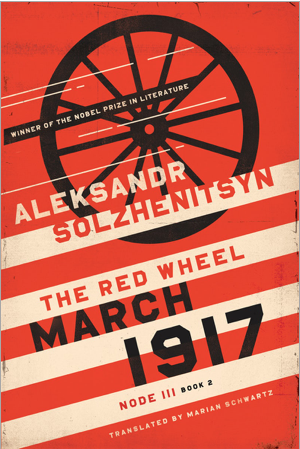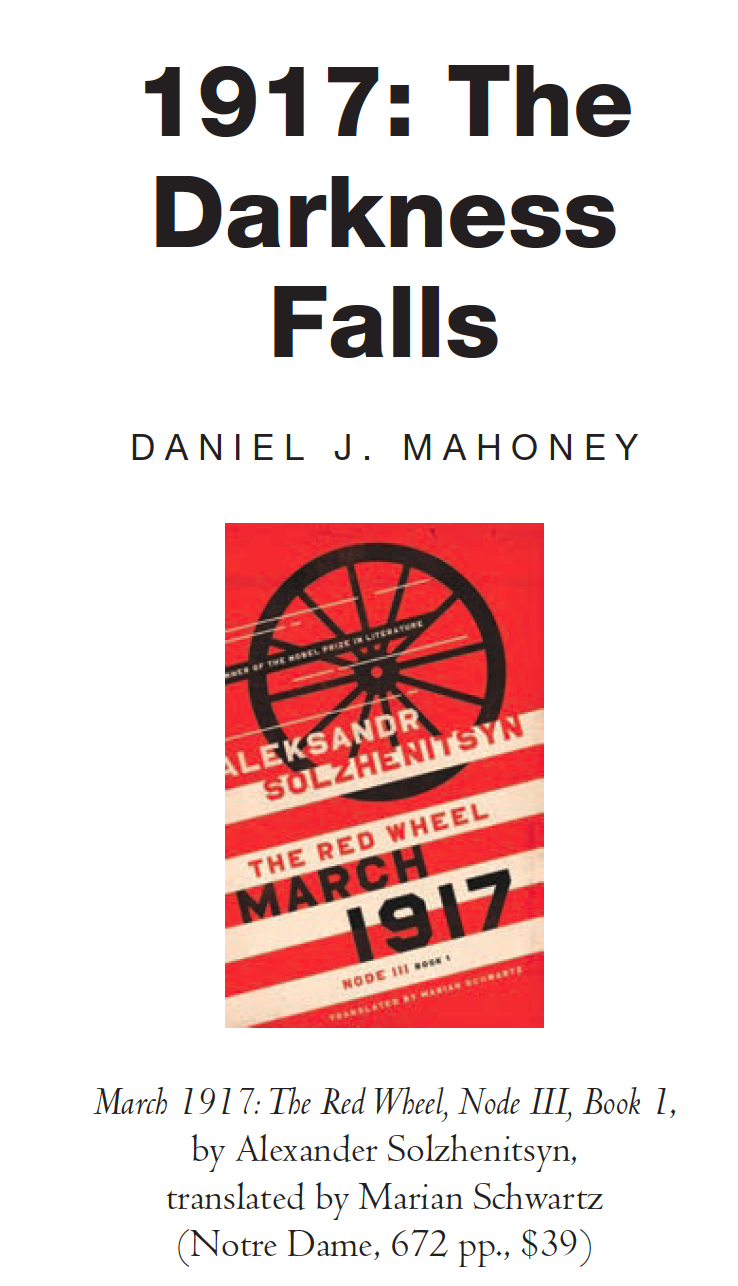The Red Wheel, Node III, March 1917, Book 2 is available today for the first time in English from University of Notre Dame Press, from Amazon, or wherever books are sold.
With this volume we arrive at “the revolution at last" with an utterly passive and inconsequential Tsar, feckless liberals and socialists in the new Provisional Government (who see no enemies to the Left), disciplined totalitarian socialists with their eyes on the prize, and revolutionary mobs, drunk with the spirit of revolution and destruction. “The Red Wheel” is beginning to arrive at its destination… And there is some superb writing on Solzhenitsyn's part: expertly drawn streets scenes or fragments that capture the collective nihilism of the revolutionary crowds, and a remarkable chapter on the abdication of Tsar Nikolai—not to mention the devastating portrait of the vain Kerensky, and many others. The book covers three dramatic and consequential days, March 13-15, 1917.
We remind Solzhenitsyn readers of the overall sequence of the 10-volume Red Wheel:
Node I: August 1914, Books 1 & 2 (Farrar, Straus & Giroux, published in one volume)
Node II: November 1916, Books 1 & 2 (Farrar, Straus & Giroux, published in one volume)
Node III: March 1917, Book 1 (University of Notre Dame Press)
Node III: March 1917, Book 2 (University of Notre Dame Press)
Node III: March 1917, Book 3 (forthcoming—University of Notre Dame Press)
Node III: March 1917, Book 4 (forthcoming—University of Notre Dame Press)
Node IV: April 1917, Book 1 (forthcoming—University of Notre Dame Press)
Node IV: April 1917, Book 2 (forthcoming—University of Notre Dame Press)
To inform readers about Solzhenitsyn’s system of “Nodes”, and also to explain the definitive term “Node” (instead of the older “Knot”), here is a portion of the Publisher’s Note that accompanies each of the Notre Dame volumes:
The English translations by H.T. Willetts of August 1914 and November 1916, published by Farrar, Straus and Giroux in 1989 and 1999, respectively, appeared as Knot I and Knot II. The present translation, in accordance with the wishes of the Solzhenitsyn estate, has chosen the term “Node” as more faithful to the author’s intent. Both terms refer, as in mathematics, to discrete points on a continuous line. In a 1983 interview with Bernard Pivot, Aleksandr Solzhenitsyn described his narrative concept as follows: “The Red Wheel is the narrative of revolution in Russia, its movement through the whirlwind of revolution. This is an immense scope of material, and . . . it would be impossible to describe this many events and this many characters over such a lengthy stretch of time. That is why I have chosen the method of nodal points, or Nodes. I select short segments of time, of two or three weeks’ duration, where the most vivid events unfold, or else where the decisive causes of future events are formed. And I describe in detail only these short segments. These are the Nodes. Through these nodal points I convey the general vector, the overall shape of this complex curve.”
















